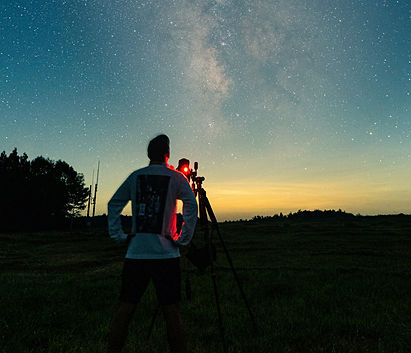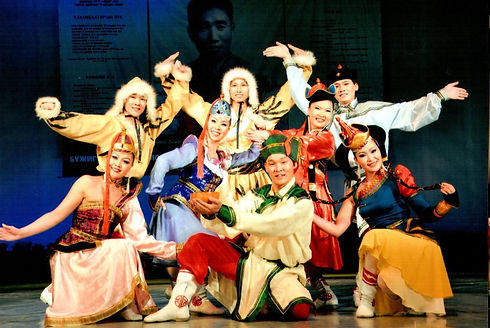
RESORT WORLD TERELJ HOTEL
Resort World Terelj Hotel is located 62 km east of Ulaanbaatar, in the Terelj Natural Complex. This location, close to the city, offers a chance to enjoy the unique natural landscape, including mountains, rocks, plants, flowers, and birdlife. Visitors can also learn about the nomadic way of life.
The area’s rocky mountains are composed of Mesozoic-era granite, shaped by water, wind, and time into strange and intriguing forms. One of the most famous landmarks is the "Turtle Rock," a large rock formation resembling a turtle.
Several rivers, including the Terelj, Khurkh, Baruun Bayan, Dand Bayan, and Zuun Bayan, originate from the Terelj
Mountains and flow into the Tuul River.
The resort offers a three-story hotel with 34 rooms, meeting and banquet halls, delicious cuisine, a sauna, jacuzzi, and massage services. Outside, there are 41 modern Mongolian yurts and wooden houses.
WATCHING THE SUNRISE
The energy emanating from the sun can lift people out of despair, giving them strength, hope, and love. It has the immense power to bring light and warmth to one's soul. A person whose mind and spirit are enlightened radiates positive energy, and their every action strives toward the right path.


STARGAZING AT NIGHT
One of the best ways to understand our universe is by observing celestial bodies (planets, the moon, asteroids, stars, star clusters, the sun, galaxies, and galactic clusters) in the night sky. It's also essential for grasping the origin and structure of the universe as a whole.
HORSE RIDING ADVENTURE
Experiencing the endurance and resilience of Mongolian horses while traveling through the stunning natural landscapes is a type of extreme adventure. For centuries, Mongols have revered and relied on horses for riding, carrying loads, and in battle. Mongolian horses are capable of finding their own forage and grazing through all four seasons, withstanding temperatures ranging from 30°C in summer to -40°C in winter.


CAMEL RIDING
There are three types of camels today: the single-humped dromedary (Arabian camel), the double-humped Bactrian camel, and the wild Bactrian camel. In Mongolia, the latter two are found. The world’s camels are predominantly single-humped (90%), while double-humped camels (9.6%) are found in regions such as northern China, Mongolia, Kalmykia, Kazakhstan, and Kyrgyzstan. These camels evolved to store fat, which serves as a source of warmth during harsh winters and springs. The ancestors of the Bactrian camel were wild camels known as "Havtgai," which still live in the Gobi Desert of Mongolia.
HIKING IN THE MOUNTAINS
Hiking in the mountains has numerous health benefits, such as reducing body weight, lowering blood sugar levels, preventing heart attacks, and reducing blood pressure. By making hiking a regular habit, you are making a significant investment in your health, mental well-being, and productivity.


FISHING
Fishing offers several benefits, such as walking long distances, which provides excellent exercise. The moist air by the riverbanks has a special positive effect on the body. Focusing on the bait drifting in the river helps clear the mind, providing mental relaxation and cleansing negative energy. It also brings people closer to nature, fostering a sense of protection and love for the environment. Fishing with friends, family, or alone in nature is a perfect way to unwind and spend quality time.
MEDITATION IN BUDDHIST TEMPLES
Meditation is like diving into the silent depths of the ocean. At the ocean’s depths, it is peaceful and still, unaffected by distractions. Our minds are naturally calm and serene when we meditate, free from noise and filled with harmony. – Sri Chinmoy


MOTORCYCLE ADVENTURE
For busy people who are constantly engaged in work and stressed by modern life, embarking on an adventurous off-road motorcycle journey is an excellent way to unwind. It allows one to interact with technology, challenge oneself in the wilderness, and develop survival skills, making it an ideal escape from everyday pressures.
TRADITIONAL ARTS OF THE PEOPLE
The national traditional arts of a country are a unique expression of its people and their way of life, reflecting their customs, heritage, and progress. These arts are also closely tied to national security, as they embody the identity and values of the people. Recognizing their importance, many countries focus on preserving, promoting, and transmitting their traditional arts to future generations. UNESCO and its affiliated organizations emphasize the importance of protecting, promoting, and spreading traditional arts. These efforts are reflected in various international conventions, directives, and declarations.

GALLERY












